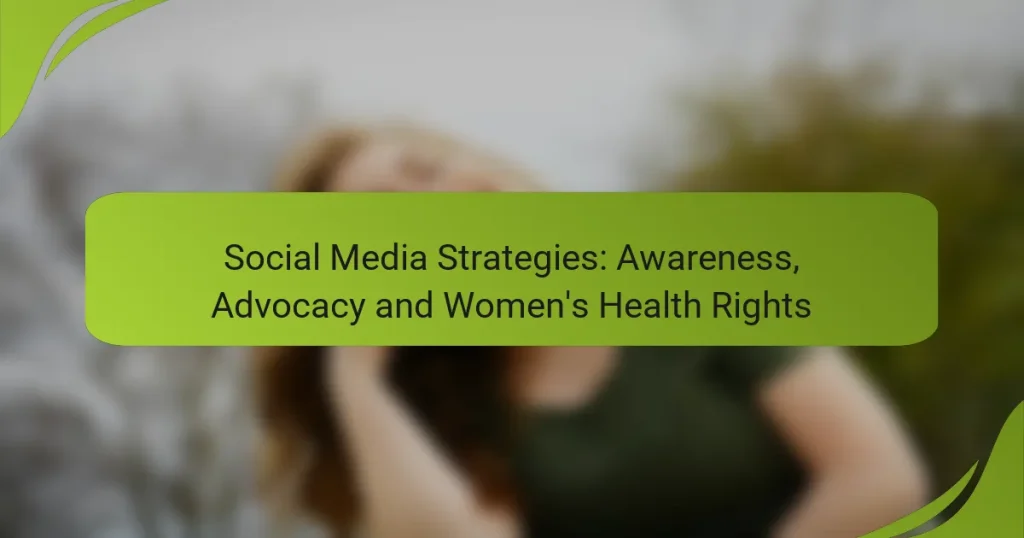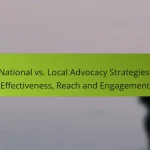Social media plays a crucial role in advancing awareness and advocacy for women’s health rights by offering dynamic platforms for education and community engagement. Through targeted campaigns and influencer collaborations, organizations can effectively mobilize support and drive meaningful change in health policies. By selecting the right platforms, such as Instagram, Facebook, and Twitter, advocates can tailor their outreach to resonate with diverse audiences and address critical health issues.
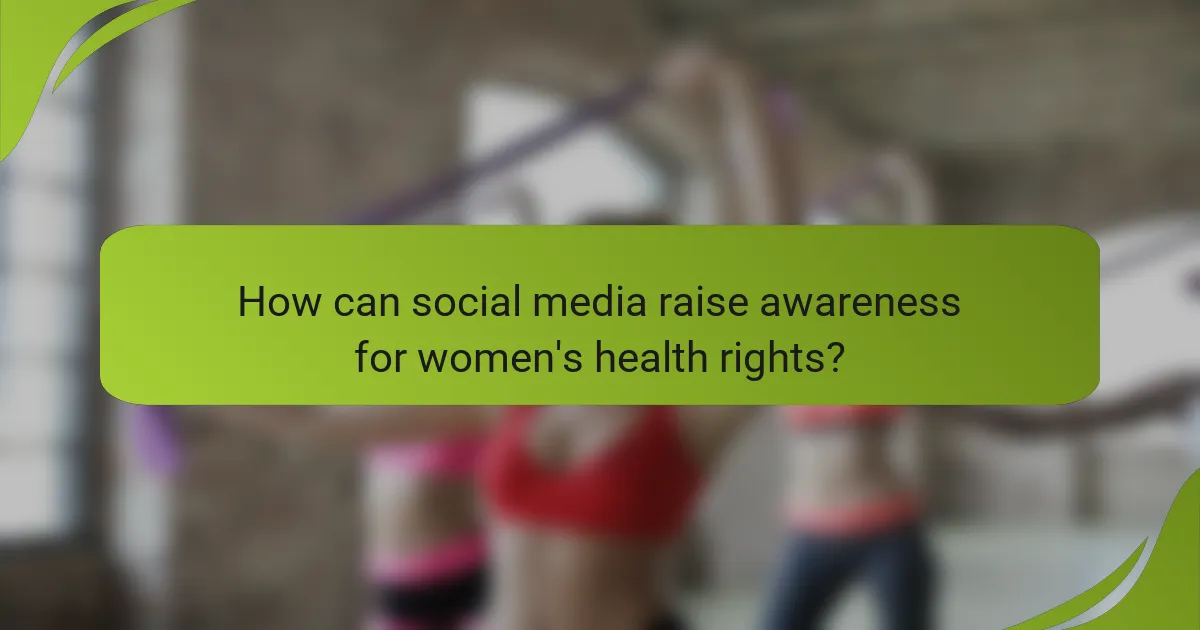
How can social media raise awareness for women’s health rights?
Social media can significantly elevate awareness for women’s health rights by providing platforms for education, advocacy, and community engagement. By leveraging targeted campaigns, influencer partnerships, and educational content, organizations can effectively reach and mobilize audiences around critical health issues.
Targeted campaigns on Instagram
Instagram is a powerful tool for raising awareness through visually appealing content. Campaigns can utilize eye-catching graphics, infographics, and personal stories to engage users and spread messages about women’s health rights. Hashtags can enhance visibility, allowing posts to reach broader audiences interested in health advocacy.
For effective campaigns, consider using a mix of formats such as stories, reels, and posts. Engaging with followers through polls or Q&A sessions can also foster community interaction and deepen understanding of women’s health issues.
Influencer partnerships for outreach
Collaborating with influencers can amplify outreach efforts significantly. Influencers who are passionate about women’s health can share personal experiences and promote campaigns to their followers, creating a ripple effect of awareness. Choose influencers whose values align with the cause to ensure authenticity.
When selecting partners, look for those with engaged audiences rather than just high follower counts. Micro-influencers, for example, often have more dedicated followers and can drive meaningful conversations around women’s health rights.
Educational content on Facebook
Facebook serves as an excellent platform for sharing in-depth educational content on women’s health rights. Organizations can create informative posts, articles, and videos that explain key issues, rights, and available resources. This content can be shared in groups or pages dedicated to women’s health advocacy.
Consider hosting live sessions or webinars to discuss women’s health topics, allowing for real-time interaction and Q&A. Regularly updating content and engaging with comments can help maintain interest and encourage community support.
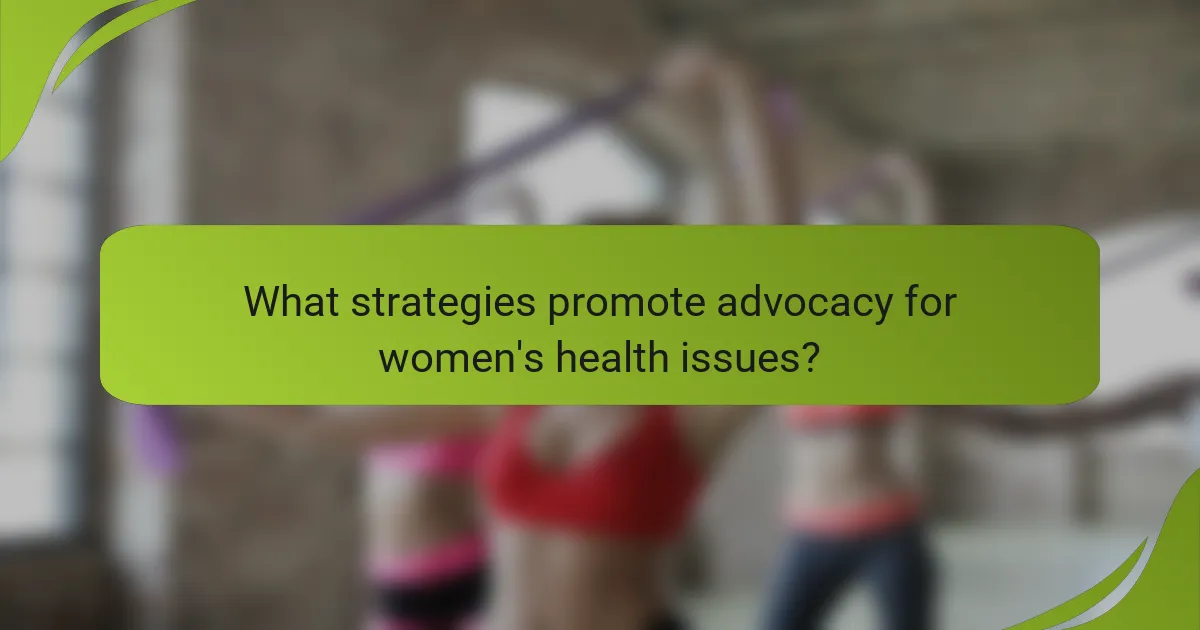
What strategies promote advocacy for women’s health issues?
Effective advocacy for women’s health issues relies on engaging communities, leveraging social media platforms, and mobilizing support through petitions. By utilizing targeted strategies, advocates can raise awareness and drive meaningful change in health policies and practices.
Community engagement through Twitter
Twitter serves as a powerful platform for community engagement, allowing advocates to share information and connect with followers in real time. By using threads to discuss women’s health topics, organizations can create a dialogue that encourages participation and feedback.
To maximize impact, advocates should use relevant hashtags, tag influential users, and participate in Twitter chats focused on women’s health. Regularly sharing updates and personal stories can also foster a sense of community and encourage others to join the conversation.
Hashtag movements on TikTok
TikTok has become a vibrant space for hashtag movements that raise awareness about women’s health issues. Creative videos using trending hashtags can quickly reach a wide audience, making complex topics more accessible and engaging.
Advocates should consider collaborating with popular TikTok creators to amplify their messages. Using visually appealing content and storytelling techniques can help convey important information while encouraging viewers to share and participate in the movement.
Petitions shared via LinkedIn
LinkedIn is an effective platform for sharing petitions related to women’s health advocacy, particularly among professionals and policymakers. By posting petitions in relevant groups or on personal profiles, advocates can reach individuals who have the power to influence change.
When sharing a petition, it’s beneficial to include a clear call to action and a brief explanation of the issue at hand. Engaging with connections through comments and direct messages can further enhance visibility and support for the cause.

Which platforms are most effective for women’s health advocacy?
Effective platforms for women’s health advocacy include Instagram, Facebook, and Twitter, each serving unique purposes in outreach and engagement. Choosing the right platform depends on the advocacy goals, target audience, and the type of content being shared.
Instagram for visual storytelling
Instagram excels in visual storytelling, making it ideal for sharing impactful images and videos related to women’s health issues. Advocates can use eye-catching graphics, infographics, and personal stories to engage followers and raise awareness.
Utilizing features like Stories and Reels allows for dynamic content that can capture attention quickly. For instance, a campaign might showcase a series of testimonials from women discussing their health journeys, encouraging others to share their experiences.
Facebook for community building
Facebook is effective for building communities around women’s health advocacy, providing a platform for discussion and support. Groups can be created to foster a sense of belonging and facilitate sharing of resources and information among members.
Engagement can be enhanced through live events, polls, and shared articles. For example, hosting a live Q&A session with a healthcare professional can provide valuable insights and encourage community interaction.
Twitter for real-time updates
Twitter is best for real-time updates and sharing news related to women’s health advocacy. Its fast-paced nature allows advocates to quickly disseminate information about events, policy changes, or urgent health alerts.
Using relevant hashtags can increase visibility and engagement. For instance, a tweet about a new health initiative can reach a broader audience if paired with trending hashtags related to women’s health. Regularly engaging with followers through retweets and replies can also strengthen connections and encourage dialogue.

What role do partnerships play in social media strategies?
Partnerships are crucial in social media strategies as they enhance reach, credibility, and resource sharing. Collaborating with various organizations can amplify messages around women’s health rights and create a stronger advocacy network.
Collaboration with health organizations
Collaborating with health organizations allows social media campaigns to leverage established credibility and expertise. These partnerships can provide access to valuable resources, such as research data, expert opinions, and educational materials that enhance content quality.
For effective collaboration, identify organizations that align with your mission and values. Joint campaigns can include co-hosted webinars, shared social media posts, or joint fundraising efforts, which can significantly boost engagement and awareness.
Corporate sponsorships for campaigns
Corporate sponsorships can provide essential funding and resources for social media campaigns focused on women’s health rights. These partnerships can help cover costs for content creation, advertising, and outreach initiatives, allowing for broader campaign execution.
When seeking corporate sponsors, focus on companies that have a genuine interest in women’s health issues. Establish clear expectations and deliverables, such as brand visibility in posts or events, to ensure mutual benefit and maintain authenticity in messaging.
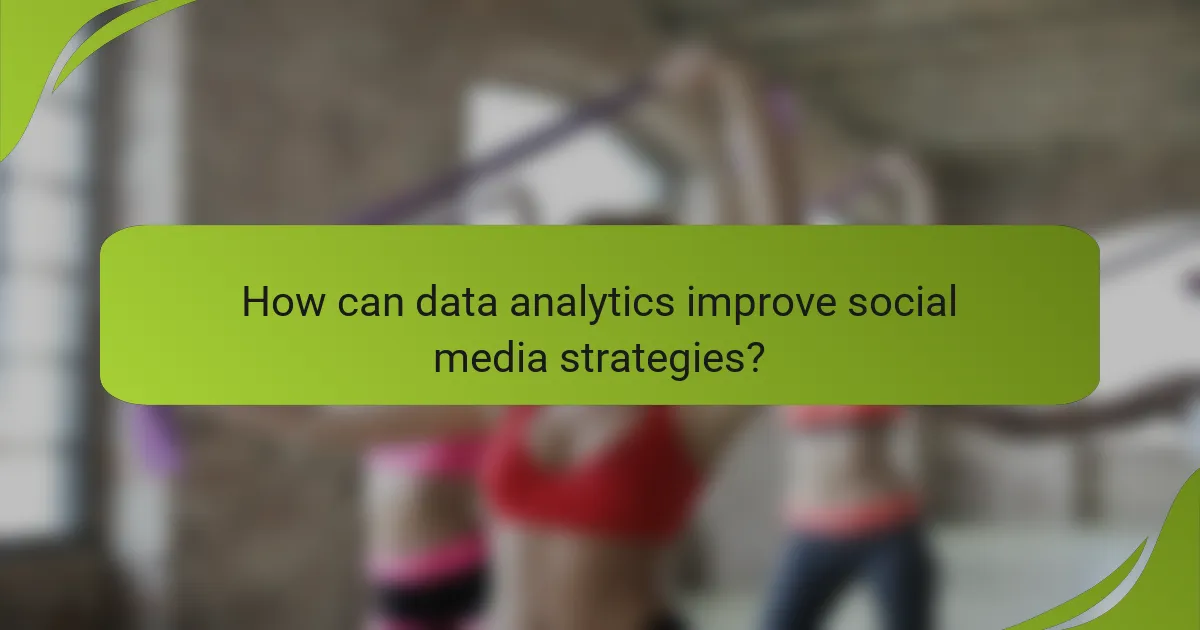
How can data analytics improve social media strategies?
Data analytics enhances social media strategies by providing insights into user behavior and content performance. By analyzing this data, organizations can tailor their messaging and outreach efforts more effectively, ultimately increasing awareness and advocacy for women’s health rights.
Tracking engagement metrics
Tracking engagement metrics involves monitoring how users interact with social media content, such as likes, shares, comments, and click-through rates. These metrics help identify which types of content resonate most with the audience, enabling organizations to refine their strategies accordingly.
For effective tracking, consider using tools like Google Analytics or social media insights dashboards. Aim for a consistent review of these metrics weekly or monthly to spot trends and adjust content strategies in real-time.
Audience segmentation analysis
Audience segmentation analysis divides the overall audience into smaller groups based on shared characteristics, such as demographics, interests, or behaviors. This targeted approach allows for more personalized messaging, which can significantly enhance engagement and advocacy efforts.
To conduct audience segmentation, gather data from social media platforms and surveys. Use this information to create tailored campaigns that address the specific needs and preferences of each segment, improving the effectiveness of outreach initiatives.
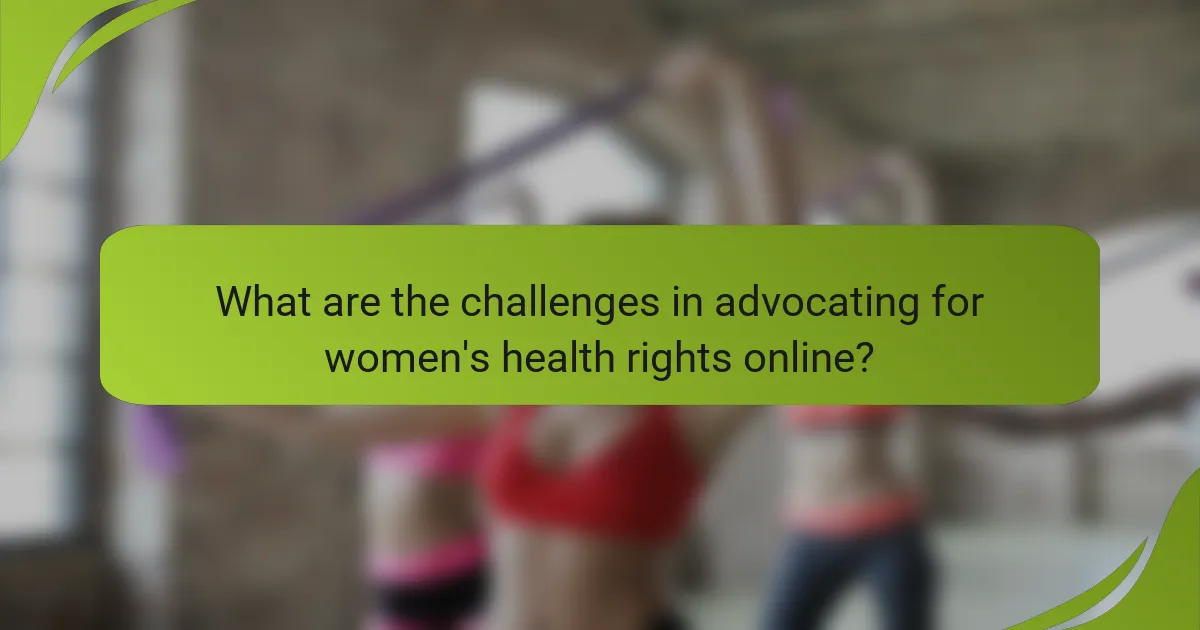
What are the challenges in advocating for women’s health rights online?
Advocating for women’s health rights online faces several challenges, including misinformation, cultural stigma, and limited access to digital platforms. These obstacles can hinder effective communication and outreach, making it difficult to promote awareness and drive advocacy efforts.
Addressing misinformation
Misinformation about women’s health can spread rapidly on social media, leading to confusion and distrust. Advocates must prioritize fact-checking and provide clear, evidence-based information to counter false claims. Engaging with reputable sources and using verified data can help build credibility and trust among audiences.
Cultural stigma and sensitivity
Cultural attitudes towards women’s health issues can create significant barriers to advocacy. In many communities, discussing topics like reproductive health or mental wellness may be considered taboo. Advocates should approach these subjects with cultural sensitivity, using inclusive language and respecting local norms to foster open dialogue.
Access to digital platforms
Access to the internet varies widely, impacting the ability to engage in online advocacy. In some regions, particularly in low-income areas, limited connectivity can restrict outreach efforts. Advocates should consider alternative methods, such as community workshops or printed materials, to reach those without reliable internet access.
Engaging diverse audiences
Effective advocacy requires engaging a diverse audience, which can be challenging in a polarized online environment. Tailoring messages to resonate with different demographics, including age, socioeconomic status, and cultural background, is essential. Using targeted campaigns and collaborating with local influencers can enhance outreach and impact.
